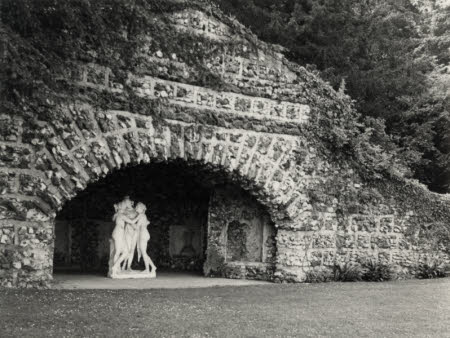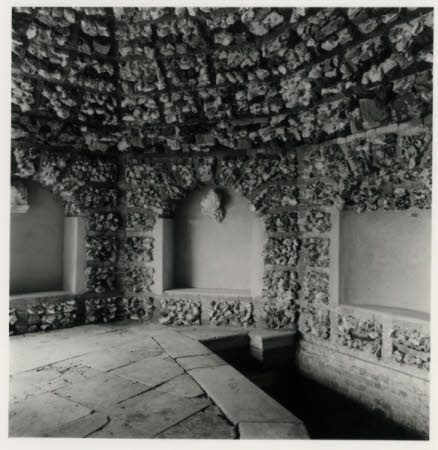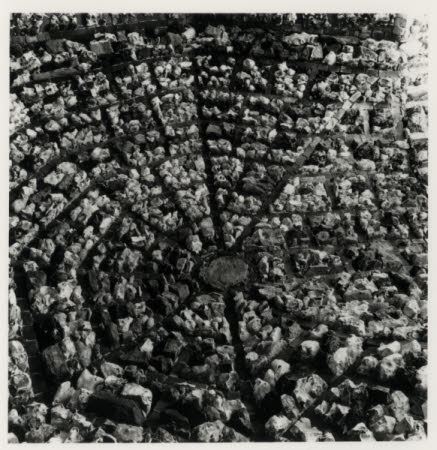Building
attributed to Giacomo Leoni (c.1686 - 1746)
Category
Architecture / Features & Decoration
Date
circa 1730 - circa 1740
Materials
Flint, Slag glass, Sandstone, Brick, Ironstone
Place of origin
Surrey
Order this imageCollection
Clandon Park, Surrey
NT 1441925
Summary
Grotto attributed to architect Giacomo (James) Leoni (c1685-1746). Within the garden, to the south side of Clandon Park. Set into a sloping bank and constructed using roughly dressed flint, slag, ironstone and sandstone set within a lattice of fine rubbed brick, imitating rusticated masonry. Interior: Vaulted roof with 6 arched niches to walls under tile, flint and wine bottle voussoirs and with splayed sides. Marble floor with plunge pool. Historic photographs record a plaster copy of Antonio Canova's Three Graces (NTinventory number 1440217) within the building, along with large shells and carved heads. The Grotto can be seen in James Seymour's undated oil painting of Clandon Park. Seymour died in c1751 giving a date by which the Grotto was constructed, it was dated to c1740 on stylistic grounds in Clandon Park (Chessum and Rowell, 2002). The Grotto was attributed to the primary phase of design and construction work at Clandon Park during the Conservation Plan of 2017, by Richard Hewlings. The Grotto was previously erroneously dated to c1780 and attributed to Lancelot 'Capability' Brown who subsequently worked for Lord Onslow at Clandon Park. The structure is Grade II listed.
Provenance
Part of the listed building. Given to the National Trust in 1956 by Gwendolen, Countess of Iveagh.
Makers and roles
attributed to Giacomo Leoni (c.1686 - 1746), architect and designer previously catalogued as attributed to Lancelot ‘Capability’ Brown (bap.1716 - 1783), landscape architect attributed to Giacomo Leoni (c.1686 - 1746), designer


